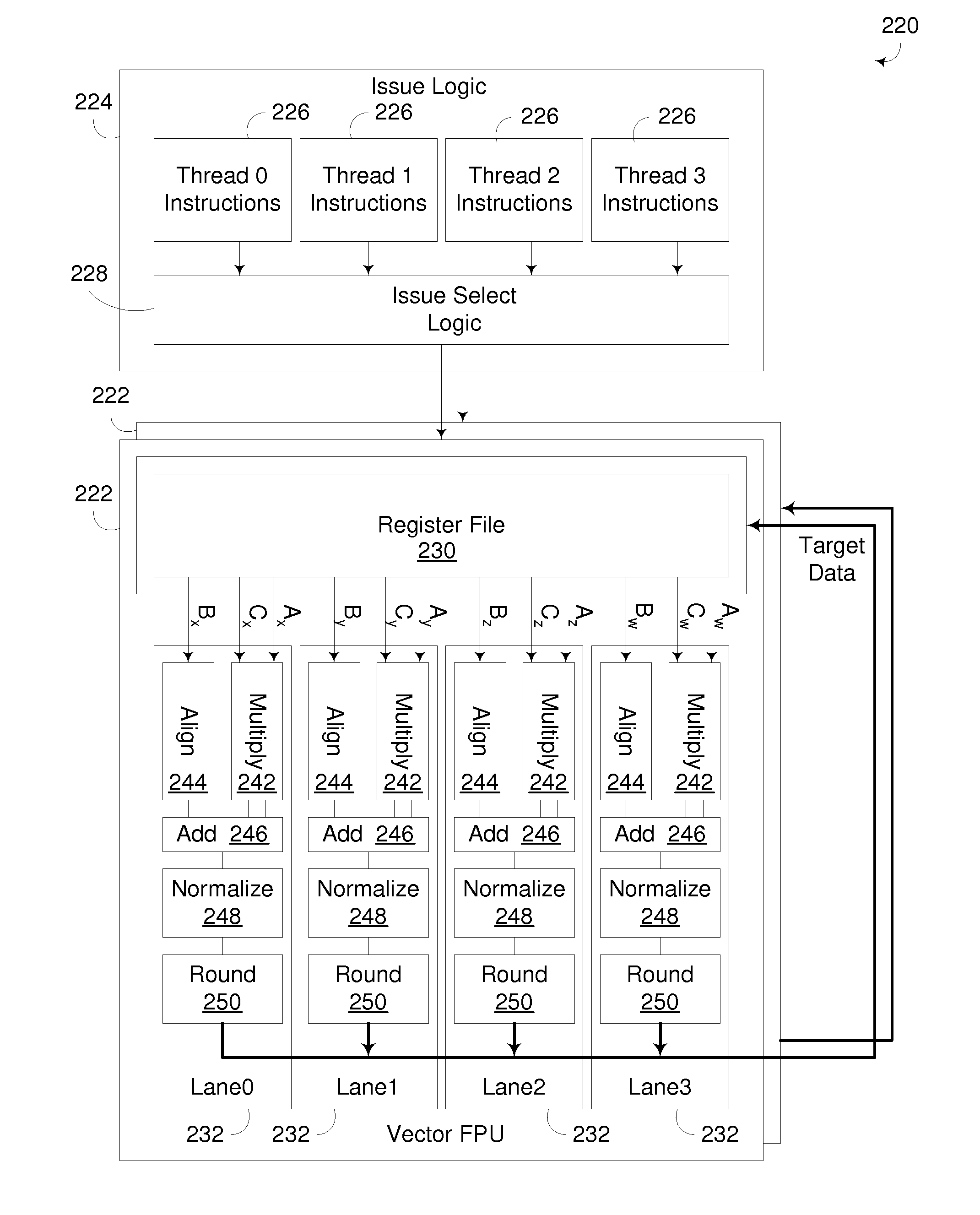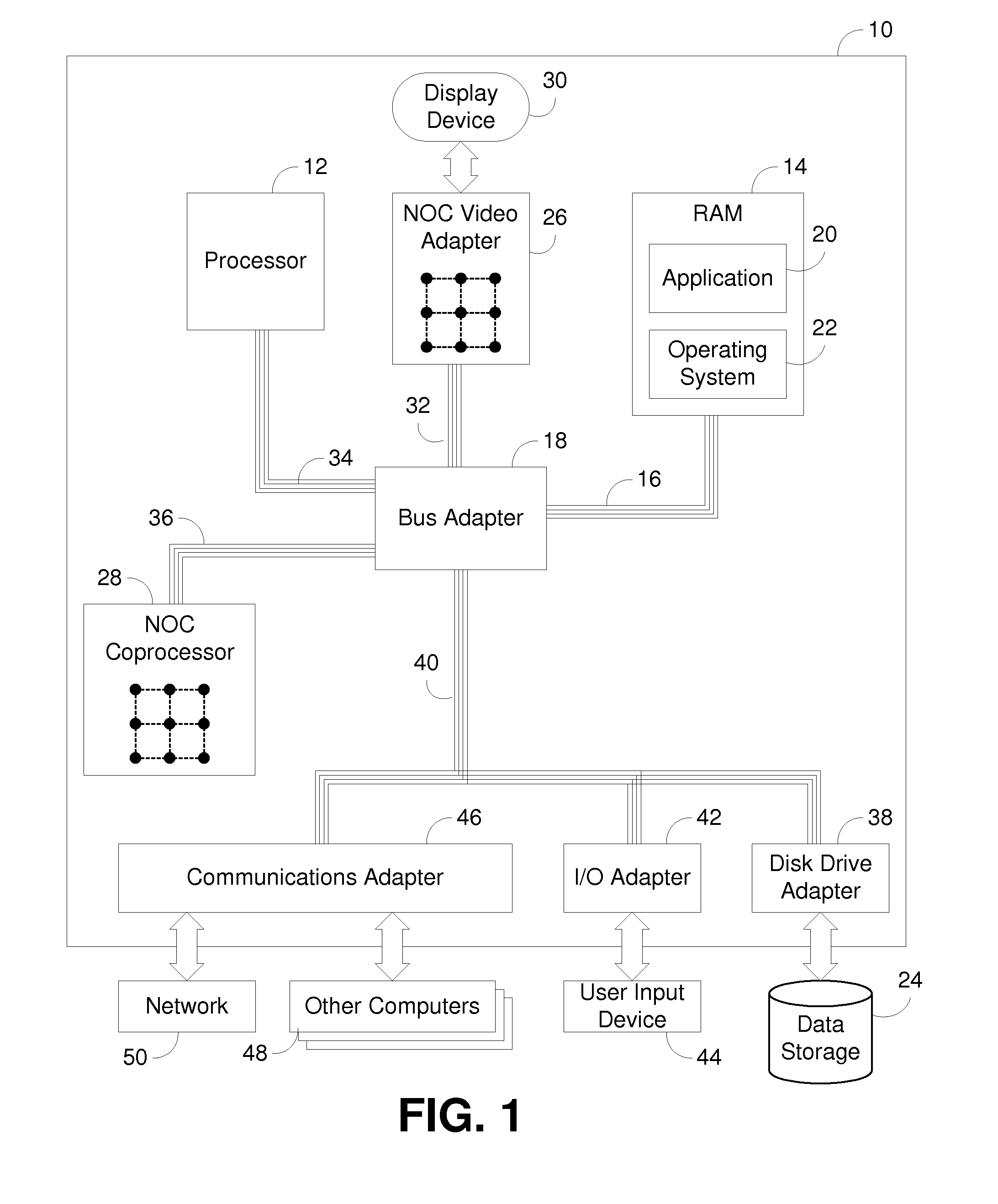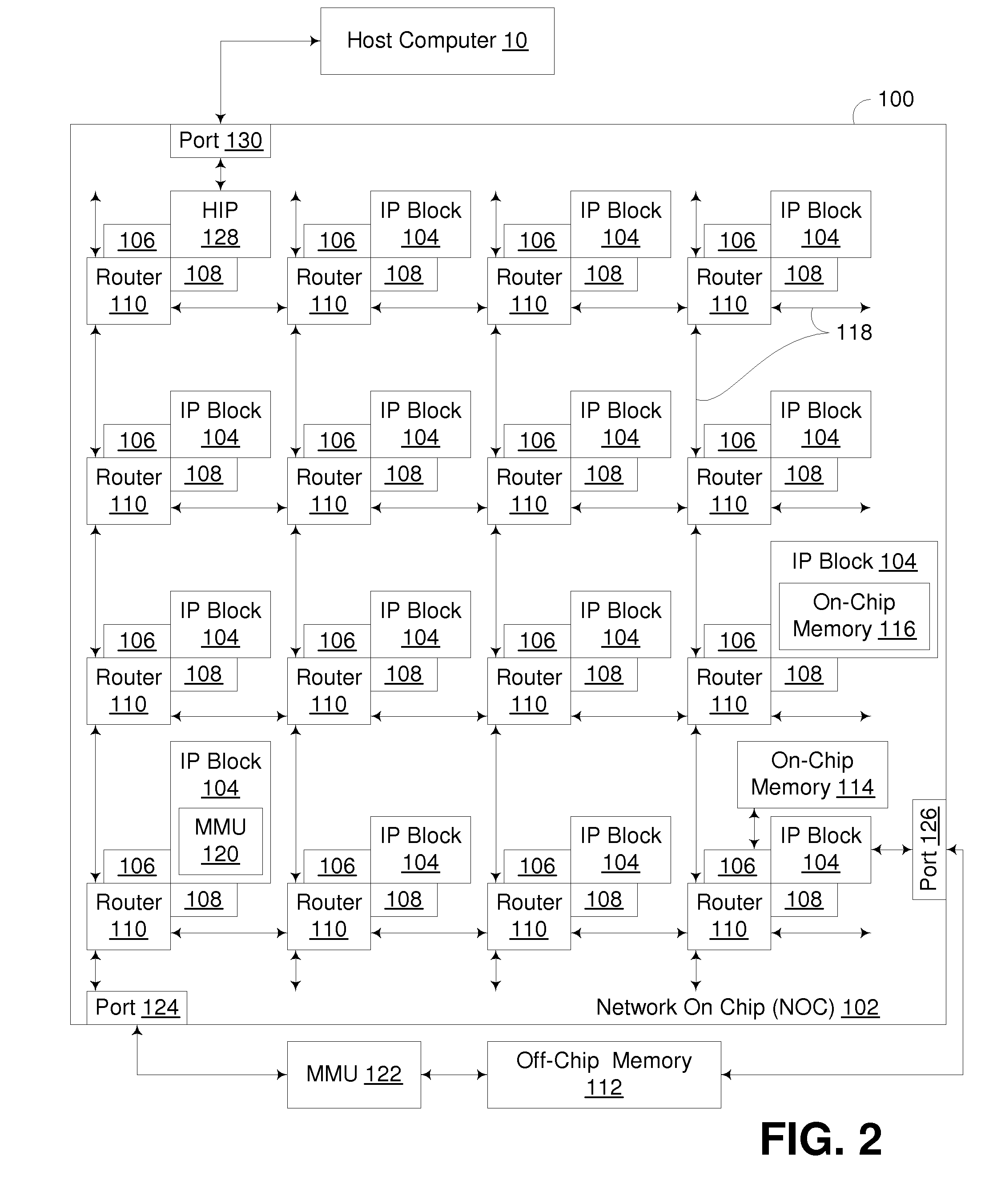Efficient Texture Processing of Pixel Groups with SIMD Execution Unit
a texture processing and execution unit technology, applied in the field of data processing, can solve the problems of significant underutilization of processing resources, inefficient algorithms executed entirely in simd execution units, suboptimal performance, etc., and achieve the effects of reducing the adverse effects of dependencies, optimizing and improving the utilization of simd execution units
- Summary
- Abstract
- Description
- Claims
- Application Information
AI Technical Summary
Benefits of technology
Problems solved by technology
Method used
Image
Examples
Embodiment Construction
[0024]Embodiments consistent with the invention utilize a grouped pixel texture processing algorithm to improve the utilization of an SIMD execution unit when performing texture processing in an image processing data processing system. As such, operations such as scalar operations performed during texel coordinate setup and filtering weight calculations may be grouped together and processed concurrently to better utilize the processing lanes in an SIMD execution unit, while operations such as applying filters to pixels can be performed using vector operations, reducing the overall processing time required to apply a texture to a plurality of pixels, and thus improving overall throughput.
Hardware and Software Environment
[0025]Now turning to the drawings, wherein like numbers denote like parts throughout the several views, FIG. 1 illustrates exemplary automated computing machinery including an exemplary computer 10 useful in data processing consistent with embodiments of the present i...
PUM
 Login to View More
Login to View More Abstract
Description
Claims
Application Information
 Login to View More
Login to View More - R&D
- Intellectual Property
- Life Sciences
- Materials
- Tech Scout
- Unparalleled Data Quality
- Higher Quality Content
- 60% Fewer Hallucinations
Browse by: Latest US Patents, China's latest patents, Technical Efficacy Thesaurus, Application Domain, Technology Topic, Popular Technical Reports.
© 2025 PatSnap. All rights reserved.Legal|Privacy policy|Modern Slavery Act Transparency Statement|Sitemap|About US| Contact US: help@patsnap.com



